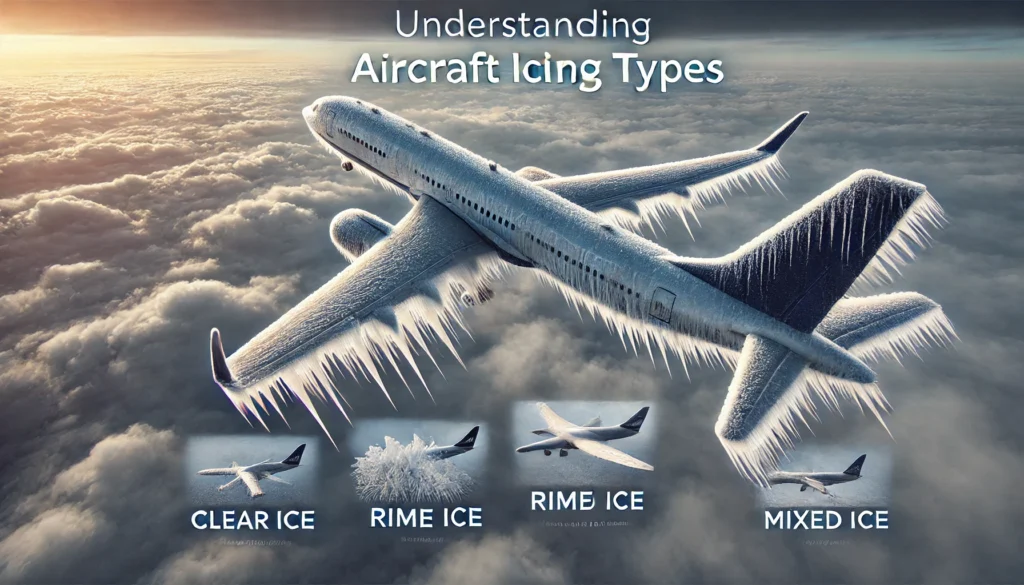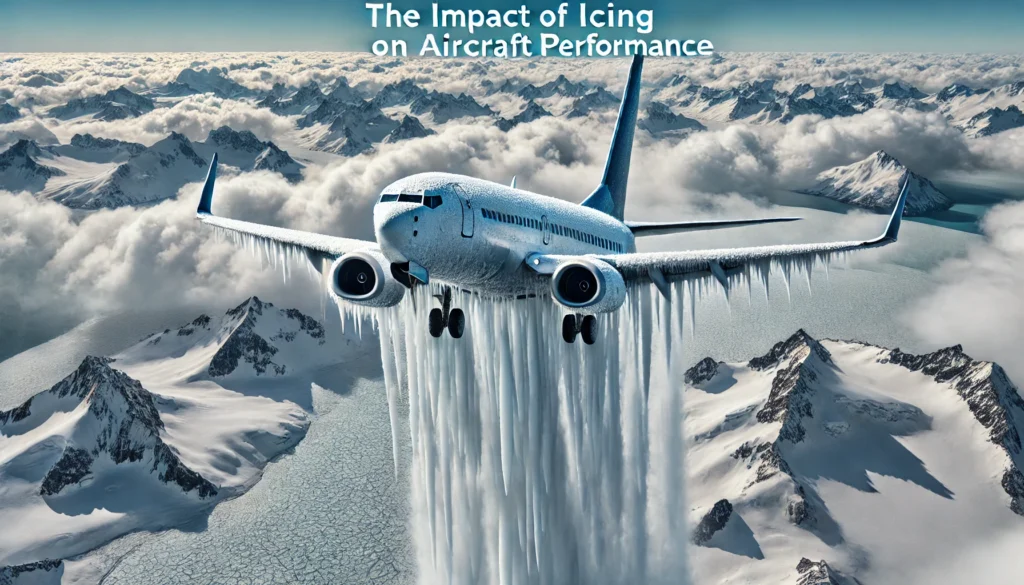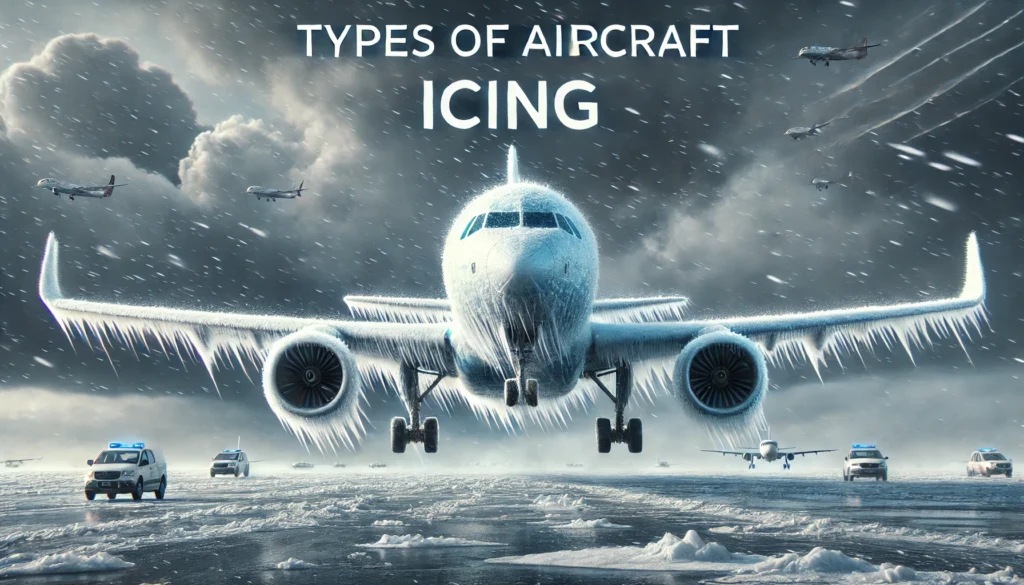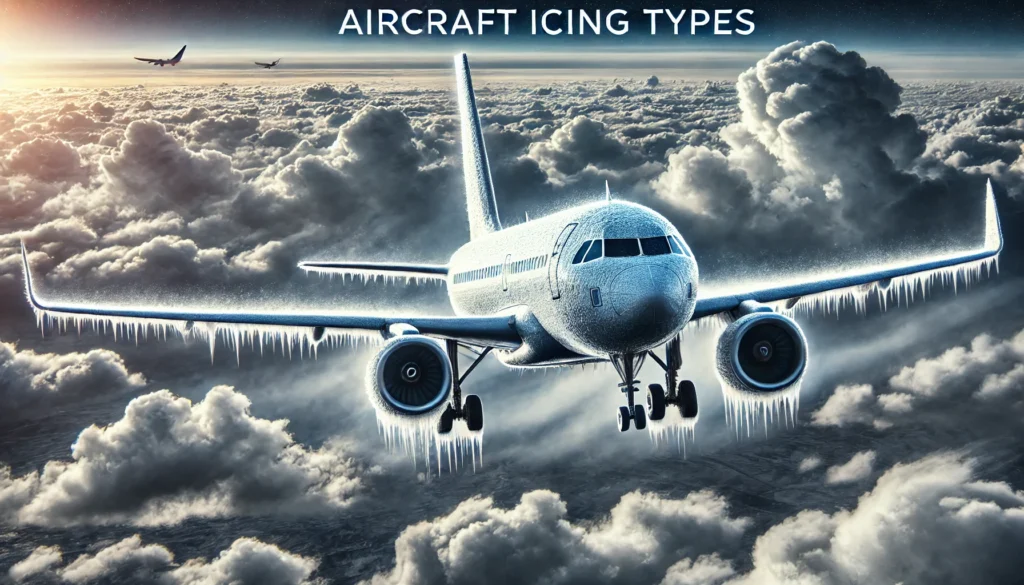Welcome to Wings Over Cloud! Today, I’m diving deep into a crucial topic for aviation enthusiasts and professionals alike: aircraft icing types. Icing is a significant concern for flight safety, impacting performance, handling, and even the safety of an aircraft. This article will provide a comprehensive guide to the different types of aircraft icing, how they form, and the measures to prevent and manage them.
What is Aircraft Icing?

Aircraft icing occurs when supercooled water droplets freeze upon contact with the aircraft’s surface. These droplets can form ice on various parts of the plane, including the wings, fuselage, and control surfaces. Understanding the different types of aircraft icing is essential for pilots and maintenance crews to ensure safe operations.
Types of Aircraft Icing

There are several types of aircraft icing, each with unique characteristics and implications. Let’s explore them in detail:
1. Clear Ice
Clear ice forms when large supercooled water droplets hit the aircraft and slowly freeze. This type of ice is smooth and transparent, making it difficult to detect visually. It typically forms on the leading edges of the wings, tail, and other surfaces exposed to airflow. Clear ice is particularly dangerous because it can alter the aerodynamic properties of the aircraft, leading to a loss of lift and increased drag.
Characteristics of Clear Ice:
- Transparent and smooth
- Forms at temperatures just below freezing
- Found in cumuliform clouds and freezing rain
Prevention and Management:
- Use anti-icing and de-icing systems
- Avoid flying through known icing conditions
- Conduct thorough pre-flight inspections
2. Rime Ice
Rime ice forms when small supercooled water droplets freeze rapidly upon contact with the aircraft. This ice is rough and opaque, making it easier to see than clear ice. Rime ice usually forms at higher altitudes in stratiform clouds or light drizzle conditions.
Characteristics of Rime Ice:
- Opaque and rough texture
- Forms quickly
- Common in stratiform clouds
Prevention and Management:
- Activate de-icing systems promptly
- Monitor weather conditions closely
- Perform regular checks during flight
3. Mixed Ice
Mixed ice is a combination of clear and rime ice. It forms when varying sizes of supercooled water droplets freeze on the aircraft, resulting in a mixture of smooth and rough textures. Mixed ice can create significant aerodynamic problems due to its unpredictable formation and varying density.
Characteristics of Mixed Ice:
- Combination of clear and rime ice
- Uneven texture
- Forms in cumuliform and stratiform clouds
Prevention and Management:
- Utilize all available de-icing equipment
- Avoid prolonged exposure to icing conditions
- Ensure timely detection and removal
4. Frost
Frost forms when water vapor freezes directly on the aircraft surface, usually when the aircraft is parked in humid conditions. Unlike other types of icing, frost does not require supercooled water droplets. While it may not form in-flight, frost can affect the aircraft’s takeoff performance if not removed before departure.
Characteristics of Frost:
- Thin, crystalline ice layer
- Forms on parked aircraft in humid, cold conditions
- Can affect lift during takeoff
Prevention and Management:
- Conduct pre-flight de-icing procedures
- Use aircraft covers when parked
- Monitor weather forecasts and conditions
The Impact of Icing on Aircraft Performance

Understanding the various types of aircraft icing is crucial, but it is equally important to grasp how icing affects aircraft performance. Ice accumulation on an aircraft can have several detrimental effects:
1. Increased Weight and Drag
Ice adds weight to the aircraft, which can lead to higher fuel consumption and reduced range. Additionally, the rough texture of ice increases aerodynamic drag, impacting the aircraft’s efficiency and speed.
2. Reduced Lift
Ice on the wings and control surfaces disrupts the smooth airflow, reducing lift. This can result in higher stall speeds and decreased maneuverability.
3. Blocked Instruments
Ice can block critical sensors and instruments, such as the pitot tube and static ports, leading to inaccurate readings of airspeed, altitude, and other vital parameters.
4. Engine Performance
Ice can form in the engine’s air intake, reducing airflow and potentially causing engine failure. In extreme cases, ice ingestion can damage engine components.
Prevention and Management of Aircraft Icing
Preventing and managing aircraft icing requires a combination of technology, procedures, and awareness. Here are some essential strategies:
1. Anti-Icing and De-Icing Systems
Modern aircraft are equipped with various systems to prevent and remove ice. These include:
- Wing and Tail De-Icing: Systems that use hot air from the engines or electrical heating elements to prevent ice buildup.
- Propeller De-Icing: Electrical heating pads or chemical de-icers that keep propellers free of ice.
- Windshield De-Icing: Heating elements or chemical sprays that ensure clear visibility for pilots.
- Engine Anti-Icing: Systems that prevent ice formation in critical engine areas.
2. Pre-Flight Procedures
Thorough pre-flight inspections and procedures are crucial in preventing icing issues. Pilots and ground crews should:
- Check for existing ice on the aircraft and remove it before takeoff.
- Ensure all de-icing systems are functional.
- Review weather forecasts for potential icing conditions.
3. In-flight Procedures
During flight, pilots must remain vigilant and take proactive measures to manage icing:
- Monitor temperature and humidity levels.
- Use anti-icing and de-icing systems as needed.
- Alter altitude or route to avoid known icing conditions.
- Communicate with air traffic control for updates on weather conditions.
Aircraft Icing “Final Thoughts”

Understanding and managing aircraft icing is vital for safe flight operations. By recognizing the different types of icing—clear ice, rime ice, mixed ice, and frost—pilots and crews can take appropriate measures to prevent and mitigate the effects of ice. Utilizing advanced de-icing systems, adhering to rigorous pre-flight and in-flight procedures, and maintaining awareness of weather conditions are essential steps in ensuring aircraft safety.
At Wings Over Cloud, we prioritize providing valuable insights and information to our readers. For more articles on aviation safety, aircraft maintenance, and industry trends, visit our website at Wings Over Cloud. Moreover, also do check out our latest product range. Stay safe and informed, and happy flying!

